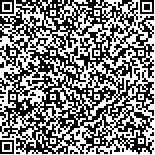下载中心
优秀审稿专家
优秀论文
相关链接
摘要

尺度效应是地理科学中普遍存在的现象,制约着遥感等空间科学的发展。发展合理的尺度转换方法以促进遥感技术的全面应用迫在眉睫。本文分别从面—面升尺度转换、点—面升尺度转换两个角度对目前定量遥感领域存在的升尺度转换方法进行综述。其中,面—面升尺度转换方法按照转换原理可分为先反演后聚合、先聚合后反演两种;点—面升尺度转换方法依据定权策略可分为简单平均法、经验回归法、地统计方法、贝叶斯方法等。不同的升尺度转换方法具有各自的特点和优势,本文分别从模型构架、基本原理、特点、局限性和适用条件等方面对现有升尺度转换方法进行分析和讨论,并从离散型与连续型、统计型与物理型、普适型与针对型以及先验知识有和无4个方面总结了现有研究中存在的不足,剖析了升尺度转换研究中存在的问题与挑战,并预测了可能的发展方向。
The scale effect is a common phenomenon in geography that restricts the development of space science, such as remote sensing. Scale issues have elicited increasing attention from scientists due to the development of quantitative remote sensing. Developing a reasonable scaling method to promote the extensive application of remote sensing technology is urgent. In this study, existing upscaling methods in quantitative remote sensing are reviewed from two aspects, namely, pixel-to-pixel and point-to-pixel upscaling. The methods are analyzed and compared in terms of the construction, basic principles, characteristics, limitations, and applicable conditions of the corresponding models.
Pixel-to-pixel upscaling methods can be divided into two types, namely, inversion-aggregation and aggregation-inversion, according to the conversion mechanism. Inversion-aggregation methods are classified as mathematics and physics based. Mathematics-based methods consist of classic image process approaches, empirical regression methods, and fractal-based methods. The principle of inversion-aggregation methods is explicit and clear, and the values acquired by such methods are generally considered true values. However, these methods require a pixel-by-pixel inversion process, which leads to low operational efficiency. Aggregation-inversion methods are categorized as input parameter-, model-, and output parameter-based approaches. Pixel-by-pixel retrieval is avoided in such methods.
From the perspective of the power determination strategy, point-to-pixel upscaling methods can be classified as simple average, empirical regression, geostatistical, and Bayesian. Simple average methods depend on a reasonable evaluation of spatial heterogeneity and an efficient sampling strategy. Empirical regression methods build the empirical statistical relationship on the basis of a large amount of sample data. Geostatistical methods consider the spatial autocorrelation and spatial distribution characteristics of variables. Bayesian methods integrate high-spatial-resolution remote sensing data and prior knowledge to acquire an optimal estimation of land surface parameters at a low spatial resolution. Different point-to-pixel upscaling methods present different advantages and characteristics. Combining the temporal-spatial distribution characteristics of parameters, prior knowledge, and applicability of upscaling methods is necessary to select reasonable upscaling methods in practical applications.
On the basis of this analysis, we summarize the problems in existing scaling research from four aspects, namely, discrete and continuous model, statistical and physical model, universal and targeted model, and use of prior knowledge or not. Several other problems, such as the definition of true value, uncertainty analysis, and scale domain and scale threshold determination, have rarely been discussed in upscaling research and require the attention of scientists.
We also provide several possible development directions of upscaling methods in quantitative remote sensing. These directions provide important guidance to scaling theory research and its practical application.

